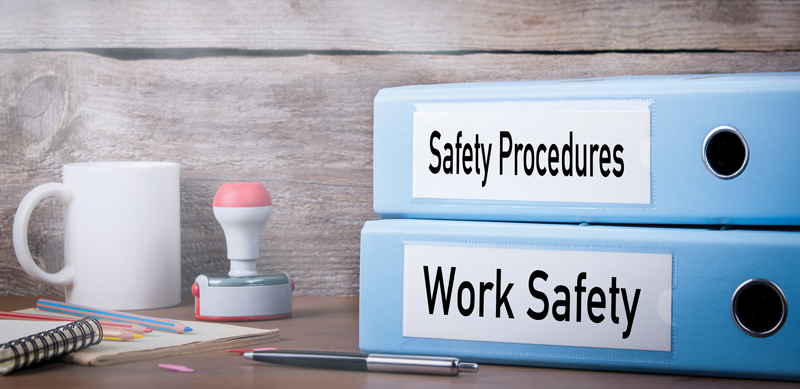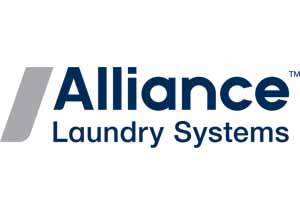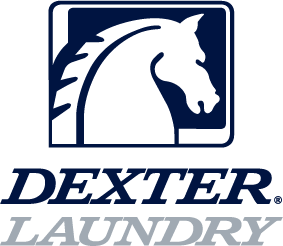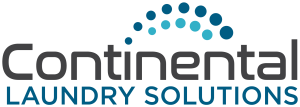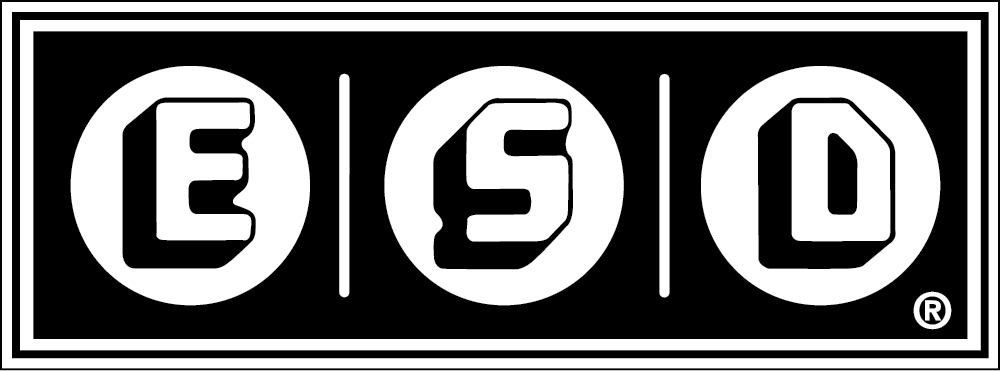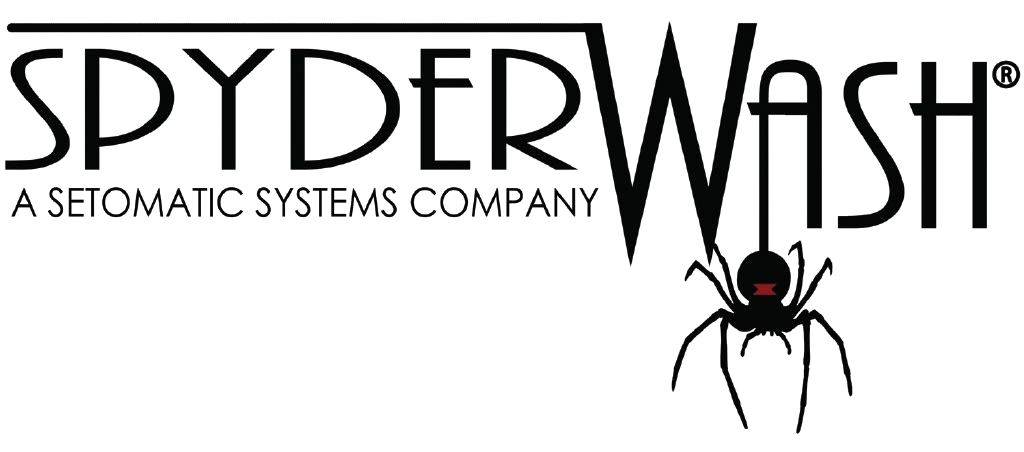The Laundromat Owner’s Guide to Preventing Accidents, Protecting Your Business, and Controlling Your Insurance Costs
As more and more entrepreneurs are discovering, running a laundromat can be a hugely rewarding business. But it also comes with its own set of risks and responsibilities.
From fire hazards caused by improperly maintained dryers to slips and falls on wet floors, the potential for accidents is significant. These incidents not only jeopardize the safety of customers and employees but can also lead to costly insurance claims that impact your bottom line. Implementing effective safety measures is essential to creating a secure environment, minimizing liability, and keeping your insurance premiums as low as possible.
This month, with help of a panel of successful operators, we’ll outline practical safety guidelines every laundromat owner should follow to reduce the likelihood of accidents and claims. By addressing common risks, such as machine malfunctions, electrical hazards, and general upkeep, you can protect your customers, maintain your business’ reputation, and foster a safe and welcoming atmosphere. Whether you’re an experienced owner or new to the industry, these tips will help you safeguard your business and ensure long-term success while keeping insurance costs under control.
Joe Dan Reed
Splash ’Em Out Laundry
Lexington, Ky.
There are a number of areas around your store and factors to consider when looking to safeguard your laundry business and keep insurance costs as low as possible. Here are some strategies we employ at Splash ’Em Out:
Chemicals: Store cleaning supplies, detergents, and other chemicals in a labeled, secured area. Have a cleaning cart easily accessible to quickly address any spills that occur. Train staff members to know how to handle and dispose of chemicals safely, including emergency response procedures.
Equipment Maintenance: Develop a regular schedule for routine checks of washers, dryers, and any other machinery to identify and repair worn parts, leaks, or potential fire hazards.
Preventative Maintenance: Follow all of the manufacturers’ guidelines for maintenance schedules – including vent cleaning and replacing worn components.
Signage: Display clear instructions for proper equipment usage to reduce misuse or overloading.
Fire Prevention: Regularly clean dryer vents and/or anything pertaining to lint. Also, install easily accessible fire extinguishers, and regularly inspect outlets throughout your store to be sure all of the covers are on securely.
Emergency Preparedness: Create exit plans that clearly mark all emergency exits, and ensure they are unobstructed. Hold emergency drills by conducting safety procedures to prepare staff for situations like fires or power outages. Keep first aid kits fully stocked and accessible.
Legal Compliance: Stay updated with local building codes for fire safety, ventilation, and structural integrity. Don’t neglect ADA compliance to ensure your facility is accessible to those with disabilities. And regularly review your business insurance to ensure adequate coverage and compliance with legal requirements.
Store Surveillance: Install CCTV systems with cameras to monitor activities in and around the store for incident documentation. Assure clear visibility by maintaining well-lit spaces inside and outside, which will deter vandalism and accidents.
Facility Upkeep: Prevent slips with non-slip mats and by promptly cleaning up any spills or wet floors. Ensure walkways are clear of obstructions, cords, or equipment. And be sure to maintain stable and sturdy seating options for your customers.
Staff Training: Train your team members in customer interaction when it comes to handling disputes or addressing safety concerns diplomatically. Regularly educate staff on how to respond to emergencies, such as injuries, fires, or equipment failures. Perhaps offer safety incentives such as rewards or recognition for employees who demonstrate exemplary safety practices.
Customer Education: Clearly post safety guidelines in visible areas of your laundry. Provide demonstrations on the proper use of your machines.
Incident Documentation: Maintain detailed records of any incidents – including date, time, witnesses, and corrective actions. And always encourage customers and staff to report safety concerns or suggestions for improvements.
By implementing these strategies, you can significantly reduce risks, foster a culture of safety, and build trust with customers and employees alike.
Patrick Dreis
Empire Laundry
Corona, Calif.
In our initial training session, we talk to every prospective laundromat employee about the safety aspects of the job. We touch on all of the basics – such as wearing sensible shoes, putting away their phones when working, cleaning up spills, and so on.
At our commercial plant, we maintain a library of updated Material Safety Data Sheets and have our employees review them every six months or so. As for our drivers, we will go over driving safety practices with those workers every month.
Beyond that, we try to focus on basic common sense on a case-by-case basis at our business.
Larry Larsen
Laundromat123.com
Yorba Linda, Calif.
There are so many things you can do to reduce the potential for a laundromat loss by taking certain steps to protect your property and assist in keeping laundromat insurance rates affordable.
Here’s my list of easy things to do to protect your business:
• Made sure you have adequate fire extinguishers mounted appropriately for easy access of your workers and your customers. Check the tags to ensure they have been properly updated and charged. One changer for every 1,500 square feet is recommended and often required by local code.
• Use fire resistant trash cans in your laundromat with self-closing lids. The rubber trash cans are cheap to buy, but they are a rapid-fire source material in the event of a trash can fire.
• Check the parking areas that people use to access your laundromat. Ensure that there are no trip hazards in the parking lot, unmarked steps, or improper ADA access routes. You may not be lease responsible to maintain the parking lot, but you will likely be named in any lawsuit that involves the parking area around your laundromat. Send a certified letter to the landlord if you discover anything that requires attention.
• Make sure that all exterior areas of your laundromat that are open to use by your customers are properly lighted. Exterior lighting may be a service paid for by the landlord, but any injuries in parking areas that service your business will likely include naming your laundromat in a lawsuit.
• Pay attention to water leaks from your washing machines. Placing a towel to absorb the drips presents a presumption in a slip and fall incident that proper equipment maintenance was an ongoing problem in a laundromat and a contributing factor to an injury.
• Keep your dryer filters cleaned regularly. End-of-day cleaning is probably not enough. Your workers should regularly check the dryer filters throughout their shifts. Dryer fires are a well-known and all-too-common occurrence in laundromats.
• Every six months, check your roofs for excessive lint, damaged vents, and the sealing material around all the roof penetrations. Water leaks into the interior of your laundromat can sometimes result in drop ceiling collapses.
• Ensure your staff keeps all doors to backrooms and equipment access areas securely closed and locked. While it might be tempting to leave these doors open, doing so can lead to accidents, as curious children and others may wander into these restricted areas.
• Although many owners handle their own repairs, take the time to learn how to do them properly. Never bypass door locking mechanisms or attempt repairs that are beyond your own skills. Some of the largest lawsuits have included repair mistakes made by unqualified laundromat owners attempting to save money by doing their own repairs. Factories often have service schools, and YouTube has many repair videos available for viewing.
• Post the proper signs that inform customers that they are in a self-service facility and they are using the laundromat equipment at their own risk. And “No Children in Laundry Carts” should be clearly posted.
• Have available for customers and staff the yellow-colored warning cones that inform customers that water may be present on the floor. Slip and fall injuries are a well-known customer issue.
• Post your emergency phone number in a prominent place in your laundromat. Many cities require this notification, and it’s worthwhile if you are partially attended. Failure to post contact information might be perceived to be an improperly operated public facility in a lawsuit.
• The price of surveillance cameras is now low enough that installation in all laundromats is advisable. A record of actual injury or an evolving dangerous situation can often lead to correction before loss.
• Avoid using inexpensive plastic chairs commonly found in discount stores, as they are prone to collapsing and are not designed for commercial use. With the increasing size of the average American waistline, it’s wise to choose seating that can safely support at least 400 pounds.
• Be mindful of your workers’ abilities and avoid assigning tasks that could put them at risk. Activities such as lifting heavy metal trash cans, accessing trash bins in poorly lit areas, climbing ladders to clean ceiling fans, or replacing light fixtures can lead to injuries. Such incidents not only endanger your employees but can also result in lawsuits against laundromat owners.
Bryan Maxwell
Vallejo Wash ’n Dry
Vallejo, Calif.
After more than 30 years as a salesperson in this industry and now as a store owner, the biggest risk to a laundry is dryer lint catching fire. Lint accumulates everywhere around dryers and creates a huge fire risk, if not addressed.
Years ago, I sold some dryers to a customer and when my installer arrived, he called me and told me he would need to close down the laundry for a few hours before he could begin the installation. There was so much lint that had accumulated behind the dryers that he was concerned for his safety and the safety of his workers. If laundry customers were allowed to use dryers while he and his team were working behind them, they would be trapped if the lint caught fire. In all, it took about four hours to remove three garbage bags full of lint from behind those dryers.
Perhaps not surprisingly, a few years later this same customer experienced a large fire behind the dryers at another property they owned.
Over my career, I’m aware of entire laundry facilities that have burned to the ground and even surrounding structures that have been damaged by such laundromat fires.
Today, as a laundry owner, I try to maintain my equipment. However, even with all I know about lint problems, we still can have issues. In fact, my team recently was cleaning our dryers, and we discovered alarming amounts of lint accumulating inside and around the dryers. Moving forward, I will be increasing the frequency of this type of cleaning procedure.
Also on the subject of fires and fire prevention, make certain you have fire extinguishers on site that are fully charged. Our extinguishers are charged and inspected once a year. After all, when you need a fire extinguisher, it does no good if it’s not charged – or you don’t even know where it’s located.
Last year, we had a contractor on site doing some electrical work. A live wire landed on top of one of my dryers, and it sparked a small lint fire. Fortunately, we were able to quickly put out the fire because our fire extinguisher was accessible and charged.
Additionally, ADA compliance is an important area that can lead to lawsuits if not properly addressed, which can impact your insurance costs. While most in the industry are familiar with issues like ADA-compliant restrooms and accessible equipment – and many have seen friends face lawsuits over these matters – there’s another potential risk tied to service animals and emotional support animals.
Does your laundry business have a clear, written policy regarding animals? If not, you may be vulnerable. I learned this the hard way when I was sued a few years ago due to the lack of a formal policy and insufficient staff training. There are strict guidelines on what you can and cannot say to customers about animals in your facility, so it’s crucial to research, create a written policy, and properly train your team.
In our case, we’ve posted signs stating that service animals are allowed, but pets are not. When staff encounter someone with an animal, they are trained to say, “I’m sorry, pets are not allowed in the laundry.” If the customer claims the animal is not a pet, the staff ensures the animal stays close to its owner and on a leash. While service animals and emotional support animals are subject to different rules, asking the wrong questions to distinguish between the two can open the door to legal trouble. It’s better to err on the side of caution and focus on clear, consistent enforcement of your policy.
Mark Csordos
Washing Well Laundromat
Matawan, N.J.
When it comes to safety and accident prevention, we try to keep it simple.
We have multiple cameras throughout the store, so if there is an accident, we can see what actually happened. We also keep a mop and towels handy to clean up any spills, and we have “Wet Floor” signs that we will use when needed.
In addition, we try to educate our customers with signage about not overloading the machines, which can cause puddles of water on the floor. Above all, our attendants know that safety comes first at Washing Well.
Bo McKenzie
BBM Coin Laundry
Rome, Ga.
BBM Coin Laundry operates two locations, and we take pride in maintaining a consistent schedule for routine maintenance. In addition to daily cleaning, we perform two key services every three months: vacuuming debris from under the lint trap screens and removing the dump valve hoses to check for obstructions, such as bra wires, that could prevent the valve from closing properly.
To enhance safety, we collaborated with our insurance provider to ensure appropriate signage is displayed throughout both locations. Additionally, we took proactive measures to prevent slips and falls by replacing all VCT flooring in our stores. After removing the tiles, we sanded the floors using a diamond-coated pad, then cleaned them with a high-pressure, high-temperature solution to remove dust and debris. Finally, we applied several coats of clear sealer to the floors, achieving a polished look that is much less slippery.
As our stores are unattended, we’ve installed an extensive security system with cameras that we monitor remotely. For added convenience and security, we equipped both locations with magnetic locks that automatically unlock and lock at set times each day.
Matt Gabris
The Wash Basket
Central Lake, Mich.
No doubt, following some key safety guidelines can not only protect your customers and your property, but also help reduce the likelihood and severity of insurance claims.
Here are critical areas we focus on at the Wash Basket:
Electrical Safety: Surge Protection
Lightning strikes and power surges can cause significant damage to expensive equipment, such as control boards on large washers and boilers. Installing surge protectors and ensuring your electrical systems are up to code can prevent costly repairs. These measures are cheaper than filing insurance claims for lightning-related damage.
Fire Prevention: Dryer Safety
Dryers pose a high fire risk, especially when dealing with flammable materials and lint buildup. Educate customers about the dangers of washing items contaminated with kitchen grease, gasoline, or diesel fuel. Moreover, regularly clean lint filters and exhaust vents to prevent fires caused by accumulated lint. Schedule routine maintenance to ensure vents remain clear.
Slip and Fall Prevention
Wet floors are a common cause of slips and falls. To mitigate these risks: (1) use slip-resistant flooring, (2) install “Wet Floor” signs when mopping, (3) post signs requiring footwear in the facility, and (4) maintain proper drainage to minimize puddling.
Roof Maintenance
Roofs, especially in laundromats with heavy machinery, can suffer damage from hail or leaks. Opt for durable materials like metal or rubber roofs, and conduct routine inspections to catch issues before they escalate. Addressing roof problems early can prevent water damage to walls, floors, and equipment.
Flood Insurance
In non-flood zones, flood insurance can cover damages from burst pipes or drain overflows. This is invaluable for repairing drywall, replacing flooring, and mitigating other water-related damage. In flood-prone areas, consult with specialists to evaluate coverage options.
Title and Environmental Insurance
When purchasing an existing laundromat, consider the following:
• Title Insurance – it will ensure there are no outstanding liens on the property.
• Environmental Insurance – if the property was previously a gas station or drycleaner, contamination may be an issue. Environmental insurance can cover costly cleanups that might not be evident during initial inspections.
Extended Warranties
Invest in extended service warranties for refurbished equipment, especially when dealing with unfamiliar distributors. Verify the terms and ensure they’re in writing for legal recourse, if necessary.
Leasing vs. Buying Property
Leasing allows for consistent expenses and avoids the significant upfront costs of building maintenance. It also can be written off as an operating expense, providing financial flexibility compared to the slower depreciation of owned buildings.
Vehicle Insurance
If your business uses service vehicles, take steps to minimize premiums. This include enrolling drivers in defensive driving courses, using speed governors and telematics devices to monitor driver behavior, and opting for higher deductibles to lower premium costs.
Personal Liability Insurance
For larger business owners or those with multiple locations, blanket personal liability insurance can protect against lawsuits related to discrimination, harassment, or negligence. This coverage is especially important for owners who may be perceived as “deep-pocketed.”
Risk Reduction Measures
Implementing some non-policy safety practices can significantly reduce risks. These can include:
• Cameras: Install security cameras to deter theft and misconduct.
• Water and Gas Shut-Off Valves: Ensure valves are easily accessible and exercise them annually to prevent malfunctions.
• Exit Signs: Clearly mark at least two exits in each building for emergencies.
• Backup Power: Install a backup generator to maintain service during power outages, particularly for commercial accounts.
• Preventive Maintenance: Keep spare parts for critical equipment on hand and maintain uniformity in equipment models to simplify repairs.
• Lighting: Ensure all areas, including behind dryers and outdoor spaces, are well-lit to enhance safety and deter criminal activity.
Customer Service
A friendly and responsive customer service approach can diffuse frustrations over machine malfunctions or subpar conditions. Promptly addressing complaints and maintaining a clean, inviting space fosters goodwill and repeat business.
By proactively addressing these areas of their laundry businesses, owners can reduce the likelihood of accidents, equipment failures, and lawsuits – all of which contribute to lower insurance claims and a safer environment for everyone.
Dan Marrazzo
Laundry Depot
Penndel, Pa.
One of the most preemptive ways to save money in this industry is to mitigate your losses from insurance claims. Slips and falls are the most common problems we have seen over the last four decades, and these claims have occurred more often – and become more frivolous – over the years.
In the late ’80s, I had an older woman who allegedly fell in the entrance of the store. After finding out a bit more, I learned she was a “serial faller” who did pulled this stunt a couple of times a year to purchase Christmas gifts for her grandkids. And this type of activity has gotten worse through the years.
With that said, surveillance cameras are no longer an option, and their affordable pricing makes them your best line of defense. With cameras, storage is important because plaintiffs have 24 months to file suit, and they often wait to outlast your video retrievability.
Attendant training also is invaluable. Trying to teach anticipation of problems is a great way to avoid them. For example, seeing fabric softener spilled all over the floor should be a red alert.
Durable runners at every door can help prevent customers from slipping when coming in from the rain or snow.
If your landlord does a poor job of removing the snow around your store, invest in a few bags of salt for the front of your business. Attorneys are extremely generous to include everyone – including you – in a lawsuit. Prevention is much cheaper than legal defense.
A fire alarm monitoring system will reduce your insurance costs, as well as lowering the response time of the fire department if should you suffer a dryer fire. If your store is unattended and there’s a fire, the customers often will simply take their clothes and leave – without bothering to call 911.
If the manufacturer allows, set your dryer timers not to exceed 30 minutes so that customers don’t put an hour on a dryer full of intimates, while they leave to run errands.
Of course, clean your lint screens every shift and repair any ripped screens promptly. Remove the piping at the rear of the dryer twice a year and use a chimney brush to remove the lint on the piping. Dryer sheets have a wax that causes lint to stick to the exhaust pipes.
Remove the front panels from each dryer twice a year (or as necessary) and clean out trapped lint, as well as perhaps bags of drugs or even ammunition. At a young age, my son looked forward to this operation – and, years later, I discovered it was because he would recover hundreds of dollars in cash stuck in the dryer from the pockets of customers.
Leave a bucket and mop in a remote area of the store. Many customers will clean up after a spill if they have a way to do so. For this reason, also leave a few piles of rags around so that people can clean up any small spills.
Got a bad wheel on a laundry cart? Get it fixed before it causes someone to fall.
In addition, provide several sturdy, two-step stepladders with a front rail (nothing larger and never without a rail). This will prevent falls while attempting to add detergent to larger machines.
Lastly, epoxy floors seem to be a better choice than tile to prevent slips and for durability. A clear floor is essential to a safe store.
Most insurance claims are due to a lack of common sense. Try to anticipate foolish or deliberate moves. Remember that common sense is not so common – but just enough of it (by you) can be genius.

